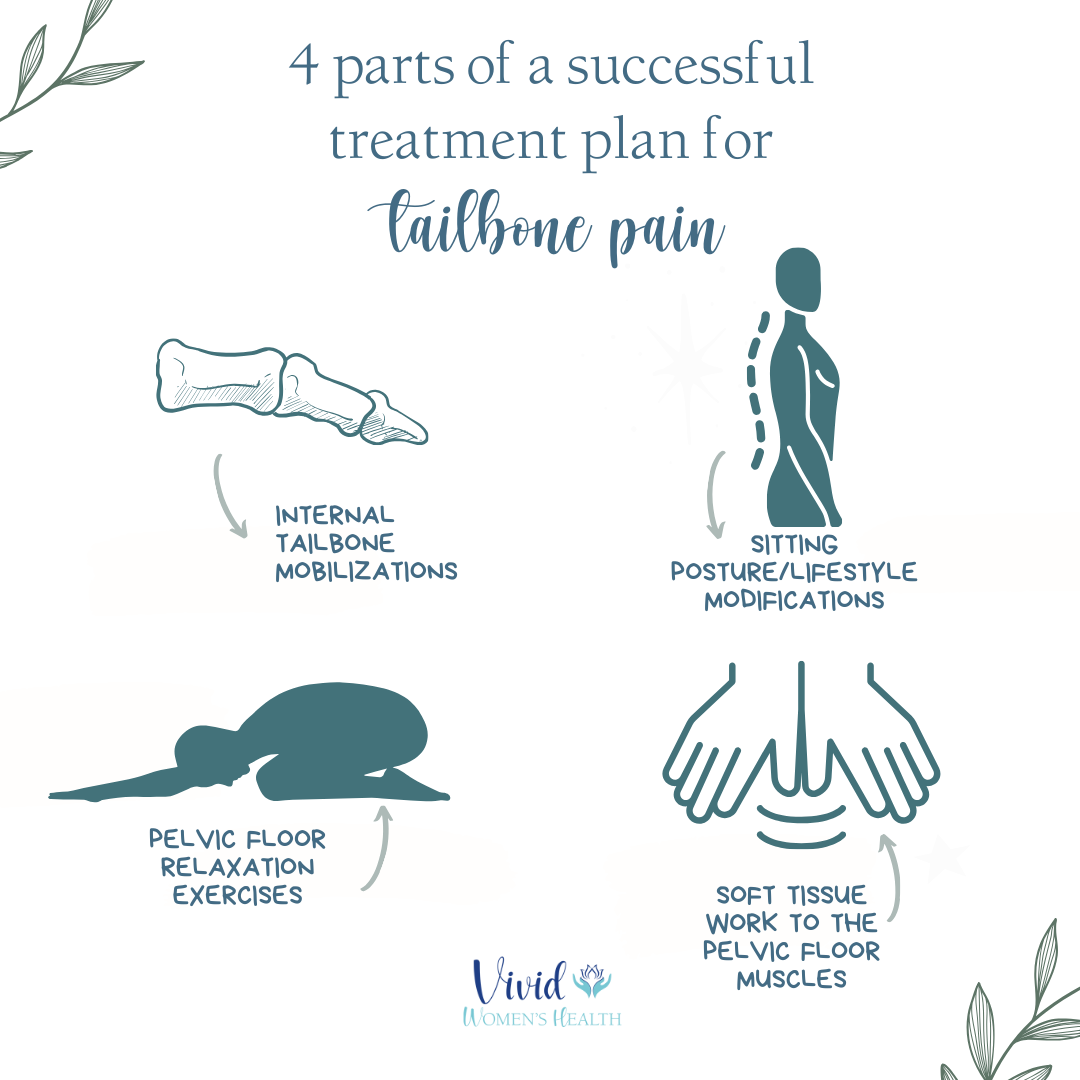Physical Therapy for Tailbone Pain.
Understanding a PTs role in coccydynia treatment.
Tailbone pain is extremely common, in fact it is 5x more common in women than men. You may experience tailbone pain during pregnancy, due to trauma such as a direct fall to the tailbone, or because of increased pressure that is placed through the tailbone while sitting.
Pelvic floor therapy is the best form of treatment for coccydynia (or tailbone pain). Pelvic floor physical therapists are specialty trained physical therapists that can perform internal assessments and treatments which are extremely effective at helping relieve tailbone pain. This is because the pelvic floor muscles have a direct attachment to the tailbone and therefore can be one of the main contributing factors to tailbone pain.
Physical therapy often includes postural training/lifestyle modifications, pelvic floor relaxation exercises, massage and soft tissue release to the muscles surrounding the tailbone, and internal tailbone adjustments.
Postural training with a pelvic floor therapist will address sitting posture with the hopes to teach you strategies to take the weight off of your tailbone while sitting. Sometimes, people benefit from using a tailbone pillow with a cut out for the tailbone. Many times when sitting, we cue our patients to shift their weight forward so that they are sitting on their sit bones, instead of sitting directly on the tailbone. Sitting on soft, yet firm surfaces are optimal when struggling with tailbone pain.
If postural training isn’t effective, pelvic floor relaxation exercises may be beneficial. These exercises often include happy baby, child’s pose, and puppy pose. We often will cue our patients to breathe into their anus and think about the doing the opposite to holding in gas. The pelvic floor muscles attach directly to the tailbone, so sometimes relaxing these muscles helps to alleviate symptoms of coccydynia.
Internal tailbone adjustments are another type of treatment that can be performed in pelvic floor physical therapy. During an internal tailbone adjustment, the physical therapist can move the tailbone and perform internal joint mobilizations to get the tailbone moving.
If the internal tailbone adjustment doesn’t take away all of your pain, your therapist will likely need to assess and possibly even massage the pelvic floor muscles that attach directly to the tailbone. When the pelvic floor muscles are tight, they can pull on the tailbone and give rise to tailbone pain. Often, the internal tailbone adjustment isn’t enough to fully relieve the pain and many patients need the internal tailbone adjustment in conjunction with the other treatments listed.
In conclusion, coccydynia treatment with a pelvic floor therapist often includes internal tailbone adjustments, manual therapy to the pelvic floor muscles, postural training, sitting posture and surface modification, and exercises to help relax the muscles around the tailbone. Because of the role that the pelvic floor muscles can plan on tailbone pain, a pelvic floor physical therapist is the perfect provider to help you.
Other resources for tailbone pain:

